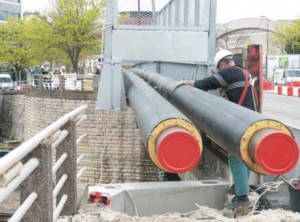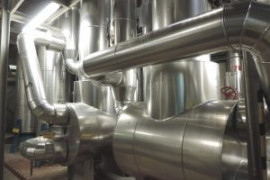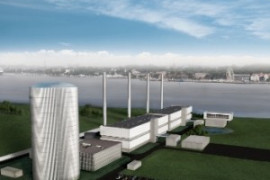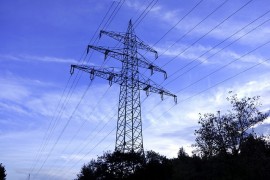Handling and storage in heating networks are extremely important operations during the installation, maintenance or extension of a heat network, and energy optimization is at the heart of concerns. We have already addressed the subject in several specifications, including those for heat loss, fitting sleeves or heat conduction.
Handling in heating networks
To ensure proper condition of the equipment and the safety of persons who transport or unload pre-insulated steel pipes or additional accessories (joints, sleeves …), some precautions are required.
Loading and transportation
During loading, check that the protective covering of the material is not at risk of being torn through contact with sharp edges of the trailer or the end of the tubes.
To avoid any risk of wear, shock or falling, the pipes pre-insulated steel joints and additional equipment must be uniformly arranged on a trailer and secured with straps, wedges or wooden separators, in the case of tubes.
Finally, during movement, all the components in the trailer should be covered by tarpaulin.
Unloading:
During unloading, care must be taken to be as thorough as possible as in loading and transportation. Unloading can be done by hand for pipes up to 12 m and additional accessories. However, it is recommended to use special machines to safely unload various types of tubes and additional accessories – for example, a forklift or a crane equipped with straps (10cm minimum width for discharge tubes 12 m).
Storage in heating networks
For storage, as for handling, particular attention must be paid to the equipment to ensure compliance and safety.
It is advisable to store:
– Pyramid tubes on a piece of dry, flat land;
– Sleeves standing to avoid any distortion;
– Components for manufacturing PUR foam in a dry, well-aired location between 15 and 30 ° C.
Caution, it must be noted that it is forbidden:
– To use ropes or steel chains by way of straps;
– To use a forklift with forks which might be in direct contact with the tubes;
– Carry or move polythene covers or tarpaulins if the temperature is at or below -15 ° C;
– To store equipment more than three months after delivery.
Setting search
Remember, setting search is the action by which the tubes are placed in the trench. For this step, too, vigilance is required.
Manual search of optimum layout:
– Size the trench so that the thickness of the cover layer is 600 mm.
– Provide 150 mm separation between the tubes and the wall of the trench.
– Place the tubes on a bed of sand with a thickness of 100 mm with gear with two straps that hold the tube in 2 different locations to avoid deforming the tube. In addition, it is strongly recommended to drag pipes in the trench so as not to damage the sheath HDPE.
Warning, if you do not follow these steps, you may prematurely damage the tubes before they are buried and negatively impact network operation.
To regularly receive more tips and to guarantee you don’t miss any developments in the heating network industry, subscribe to our newsletter.








